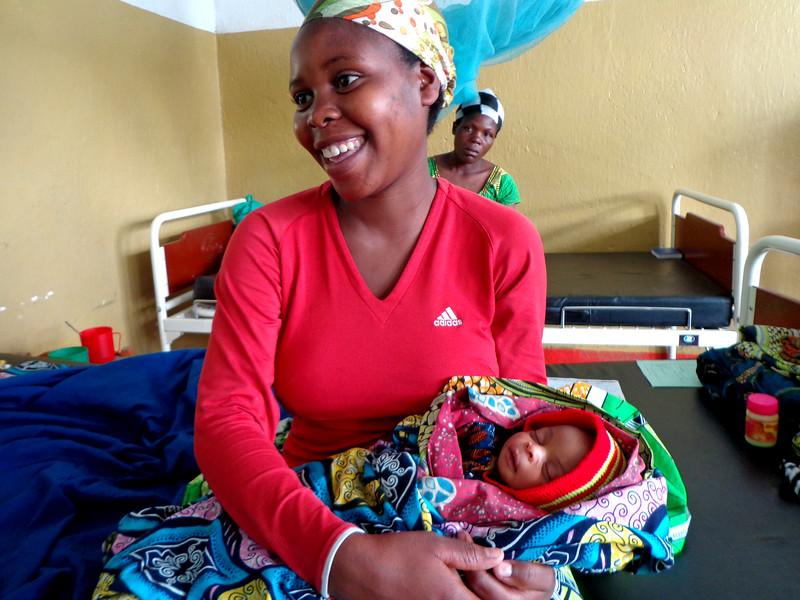60 Years On! Pharmacovigilance Continues to Contribute to Maternal and Newborn Safety
60 Years On! Pharmacovigilance Continues to Contribute to Maternal and Newborn Safety
By Comfort Ogar, Andualem Oumer, and Jane Briggs.
Originally published on the MTaPS website

Many accounts of the history of pharmacovigilance take their root in the thalidomide disaster of the 1960s that led to thousands of babies born with phocolemia, a condition that adversely affects limbs. The babies’ mothers had used thalidomide to treat nausea and morning sickness during pregnancy. Thanks to the vigilance of health care workers at the time, medical safety surveillance systems were birthed—60 years later, pharmacovigilance (detecting, assessing, understanding, and preventing adverse effects of medicines and other medicine-related problems) remains critical to ensuring the safety of medicines, including for mothers and newborns.
Critical Quality Gaps in Maternal and Newborn Care
The World Health Organization aptly chose the theme for the 2021 World Patient Safety Day: “Safe maternal and newborn care,” and has urged all stakeholders to “Act now for safe and respectful childbirth!” Unfortunately, the safety surveillance systems that serve as safeguards in high-income countries are often lacking in many low- and middle-income countries (LMICs) that still experience the high burden of maternal and infant mortality occasioned by poor or non-existent health services. Current estimates indicate that approximately 810 women die every day from mostly preventable, treatable causes related to pregnancy and childbirth. Further, 94% of all maternal deaths occur in LMICs . Around 6600 newborns die every day, accounting for 47% of all under-5 deaths. About 2 million babies are stillborn every year, with over 40% occurring during labor. Almost all newborn deaths (99%) take place in LMICs.
Investing in Well-Trained Health Workers
Recognizing the role of well-trained health workers in improving the quality of care offered to mothers to enhance safe maternal and newborn care, the USAID-funded Medicines, Technologies, and Pharmaceutical Services (MTaPS) Program has been equipping Health Workers with Treatment Protocols and Job Aids to Reduce Maternal and Child Mortality in the Democratic Republic of the Congo (DRC). The DRC has one of the highest maternal, newborn, and child mortality rates globally (national under-five mortality rate of 84.8/1,000 live births [UNICEF, 2019] and maternal mortality rate of 473/100,000 live births [UNICEF, 2017]). The findings of an MTaPS consultation with health care providers in Ituri and Nord Kivu provinces indicated that poor management of health conditions for women and children was due to health workers’ capacity gaps. Other factors included the lack of protocols and job aids to guide patient management, negatively affecting access to and appropriate use of essential maternal, neonatal, and child health (MNCH) commodities. According to health facility staff, some post-natal deaths of women in health facilities are due to the lack of knowledge and confidence of the facility staff to administer medicines like magnesium sulfate, although the product was available.
To improve patient care and increase the safety of mothers and children, MTaPS—in collaboration with the Directorate for Family Health—disseminated and built capacity on 16 MNCH protocols and job aids, including guidelines for essential medicines, to 170 health facilities in two provinces as a way to enable better care and safety of mothers and children. Medicine use in pregnancy is extremely common, but there are significant knowledge gaps surrounding the safety, dosage, and long-term effects of medicines used in pregnancy. Pregnant women have been purposefully excluded from clinical trials of the majority of treatments for conditions that may occur concurrently with pregnancy. Consequently, the use of medicines in pregnancy should be carefully monitored or tracked to avoid any undue safety issues.
Chlorhexidine digluconate 7.1% solution, a recently introduced medicine to reduce infection and death in newborns, has been associated with blindness in some countries when it was erroneously applied to the eyes of newborns. Strong pharmacovigilance systems and monitoring allowed for the recall of the product to prevent further confusion and tragic errors.
Cognizant of the vital role of data in enhancing health outcomes, particularly with the use of medicines, the USAID MTaPS project has been supporting efforts to enhance the use of medicine safety data in safety surveillance systems through its Pharmacovigilance Monitoring System (PViMS) – A Tool to Enhance Decision-Making for Patient Safety. The tool is supporting the national pharmacovigilance centers in multiple countries to collect, collate, analyze, and use data from safety surveillance systems for HIV, TB, and other medicines including MNCH commodities and vaccines to support relevant regulatory decisions.
A Call For Vigilance
The vigilance of health care providers in the early sixties was instrumental in saving the lives of thousands of babies. With the increasing demand for new medicines for maternal and newborn health in LMICs and advances in information management systems, safety signal detection has been made easier with the use of pharmacovigilance tools—such as PViMS—that support data collection and analysis for prompt decision making. We call on the pharmacovigilance community to maintain vigilance on all products used in health care, with an emphasis on maternal and child safety issues to prevent a repeat of the thalidomide disaster.